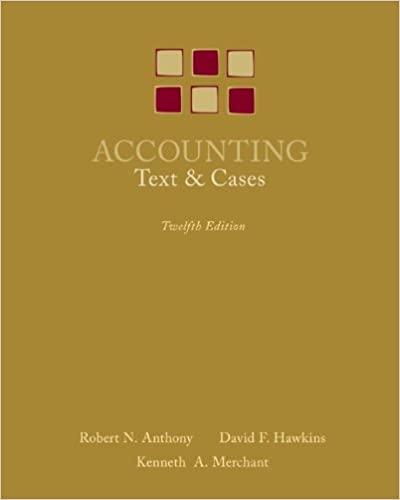Question
Taxation Problem: Jane, age 40, and Andy, age 45 are engaged and lived together the entire year. Jane moved her mother Dorothy in with them
Taxation Problem:
- Jane, age 40, and Andy, age 45 are engaged and lived together the entire year.
- Jane moved her mother Dorothy in with them on December 1, 2019, due to Dorothys Alzheimers diagnosis.
- Jane received Medicaid waiver payments of $15,000 for the care of her mother. The payments were reported on Form W-2.
- Dorothys only income was Social Security in the amount of $13,000, which she used for her own support.
- Andy earned wages of $25,000 and was enrolled the entire year in a high deductible health plan (HDHP) with self-only coverage.
- During the year, Andy contributed $1,500 to his Health Savings Account (HSA). Andys mother also contributed $1,000 to his HSA account.
- Andys Form W-2 shows $500 in Box 12 with code W. He has Form 5498-SA showing $3,000 in Box 2.
- Andy took a distribution from his HSA to pay his unreimbursed expenses:
- Urgent care bill: $375
- Hospital bill: $1,200
- Prescription medicine: $578
- Dental bills for routine exams: $168
- Over-the-counter allergy medication: $79
- Yoga Classes: $600
- Jane, Andy, and Dorothy are U.S. citizens with valid Social Security numbers.
1. Which of the following statements is true?
a. Janes Medicaid waiver payments must be included in taxable income in order to be considered earned income when calculating the earned income credit.
b. Janes Medicaid waiver payments can never be considered earned income when calculating the earned income credit.
c. Janes Medicare waiver payments are not included in taxable income and are never considered earned income when calculating the earned income credit.
d. Janes Medicaid waiver payments are not included in taxable income but can be considered earned income for calculating the earned income credit
2. What is the amount of Andys HAS deduction on Form 8889, Part 1, line 13
a. $1500
b. $2,000
c. $2,500
d. $3,455
3. What is the total unreimbursed qualified medical expenses reported on Form 8889, Part 2?
a. $2,025
b. $2,153
c. $2,321
d. $2,400
Step by Step Solution
There are 3 Steps involved in it
Step: 1

Get Instant Access to Expert-Tailored Solutions
See step-by-step solutions with expert insights and AI powered tools for academic success
Step: 2

Step: 3

Ace Your Homework with AI
Get the answers you need in no time with our AI-driven, step-by-step assistance
Get Started


